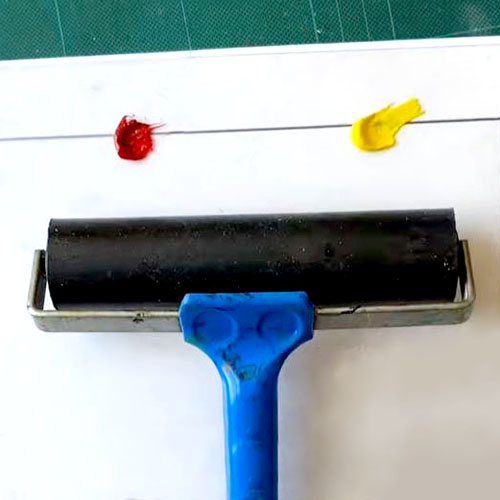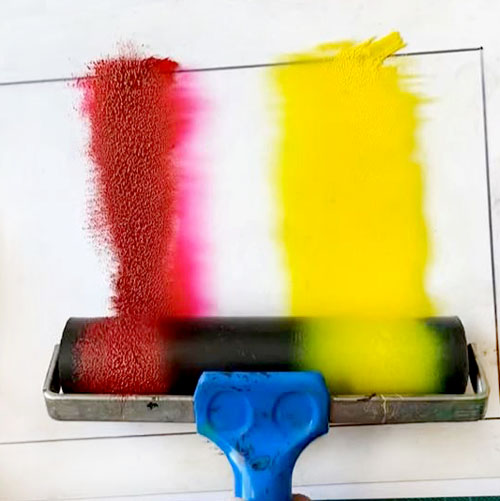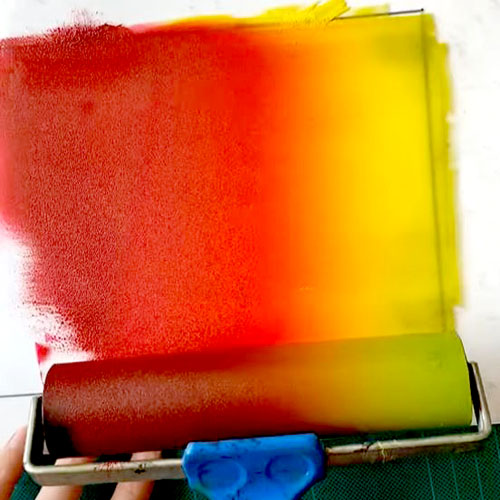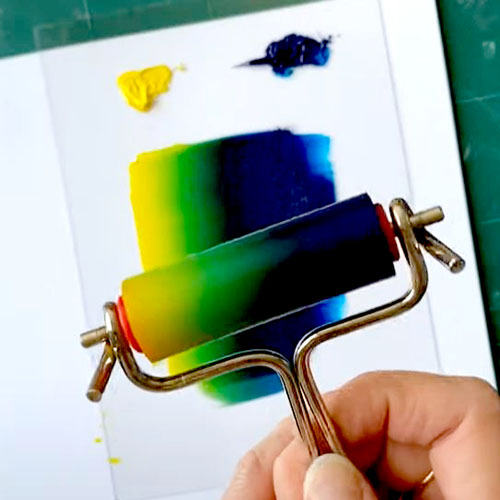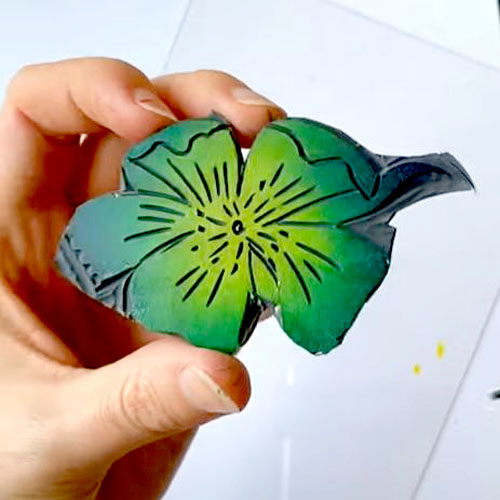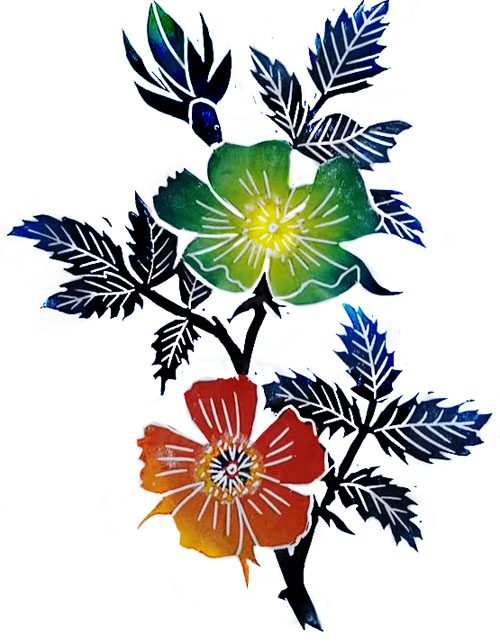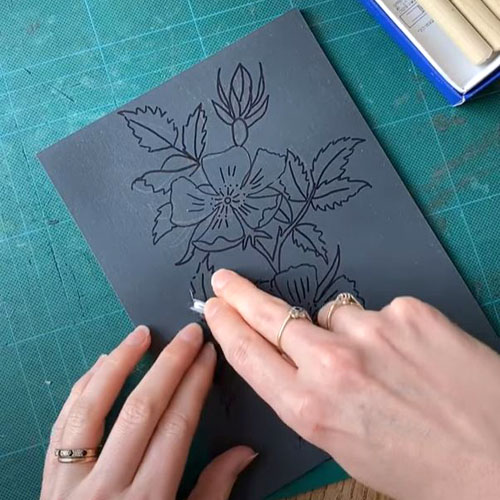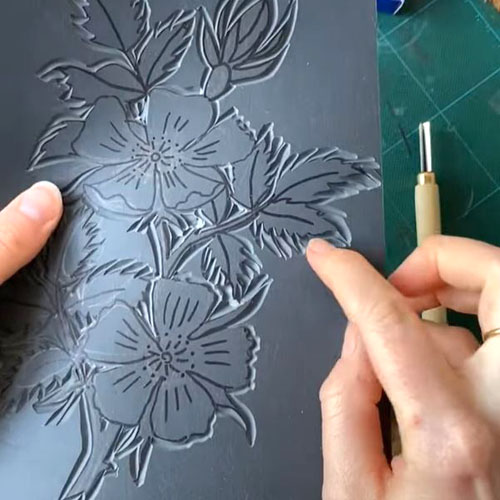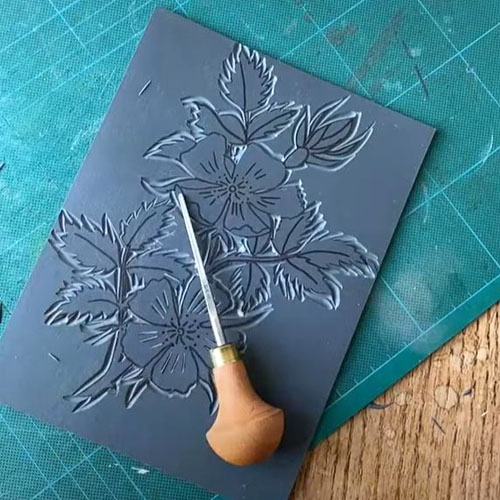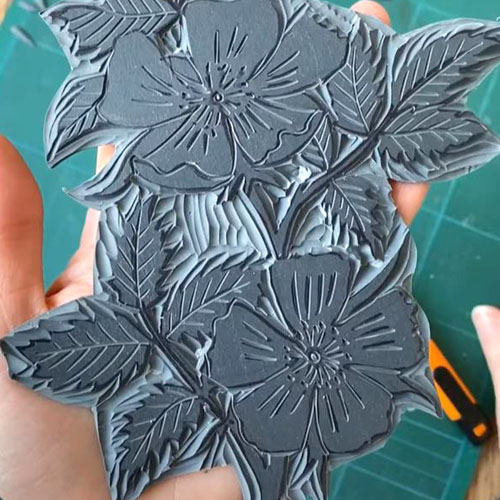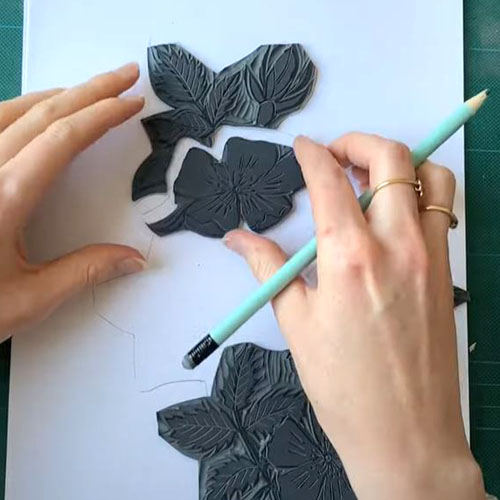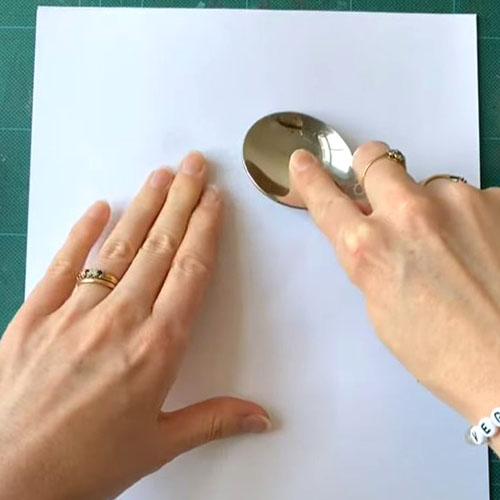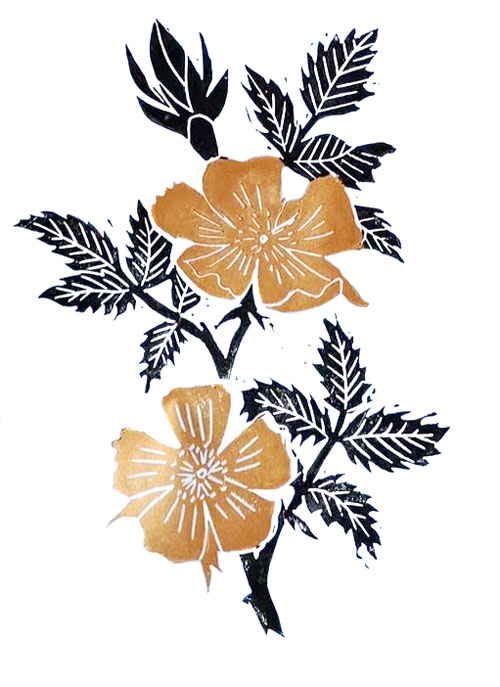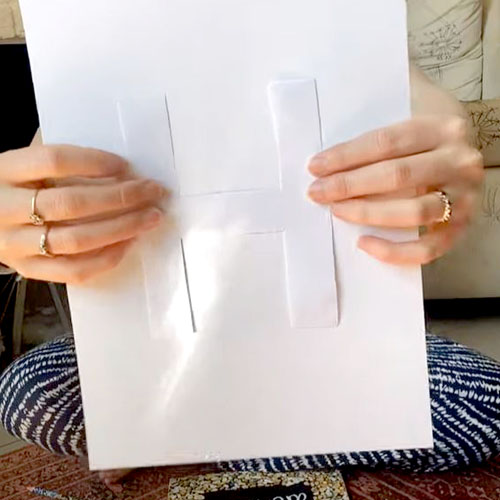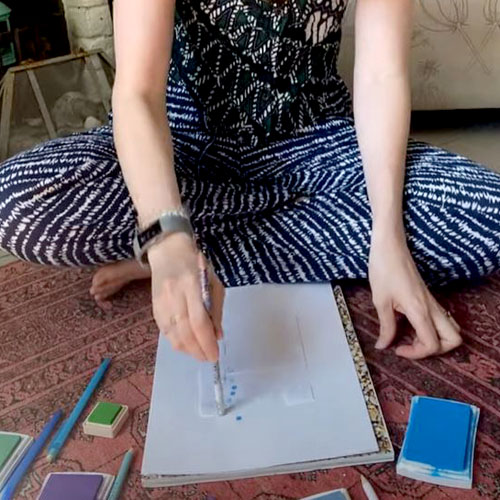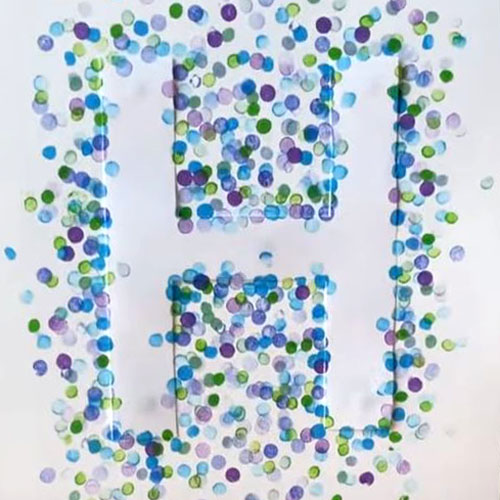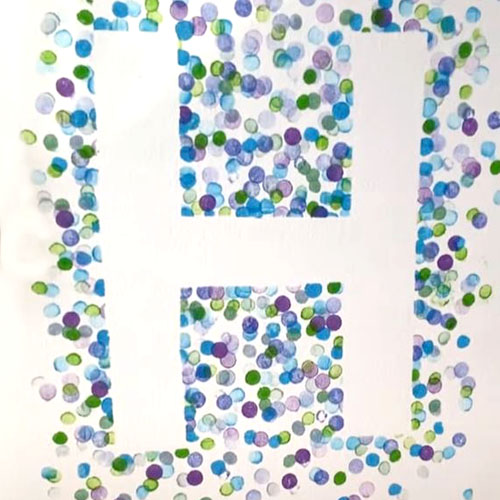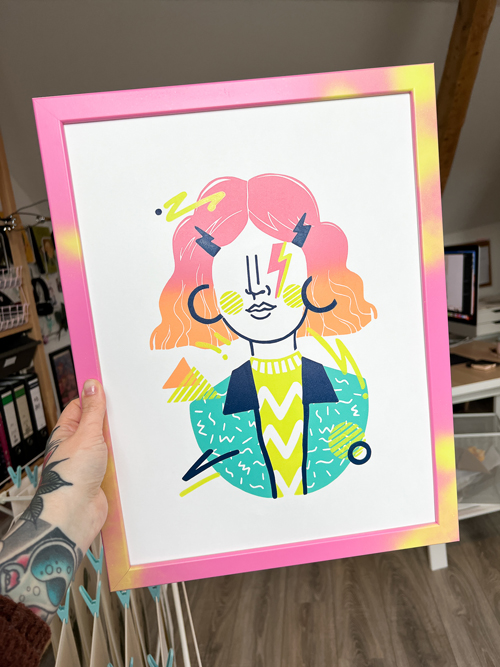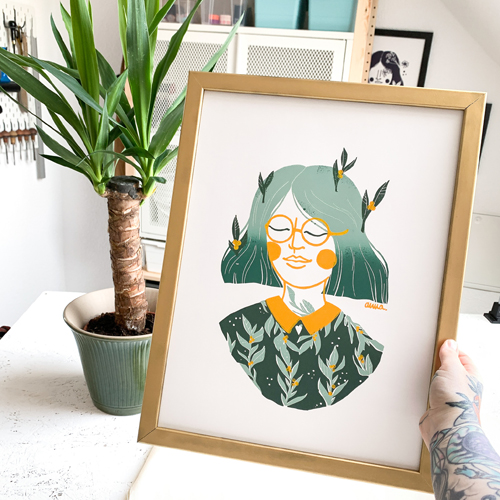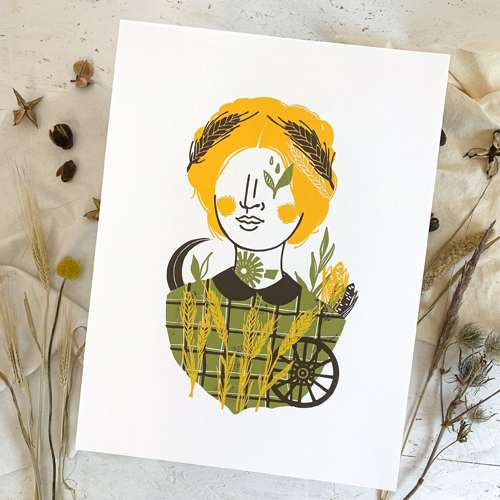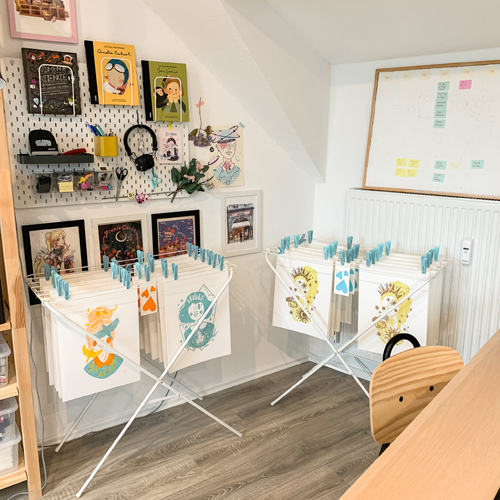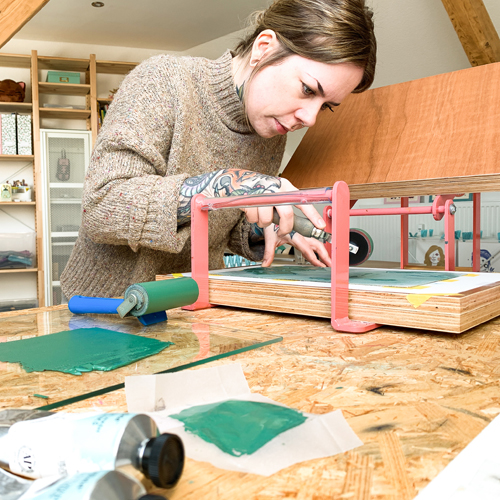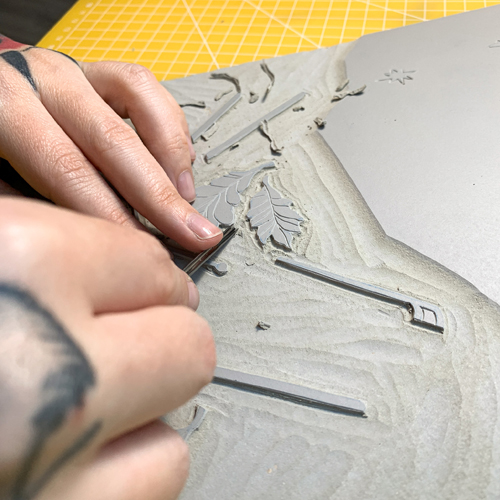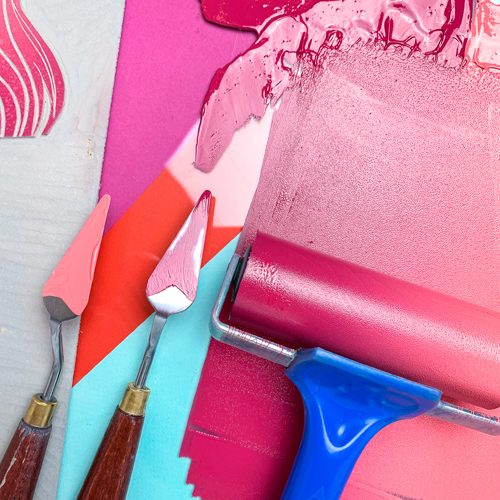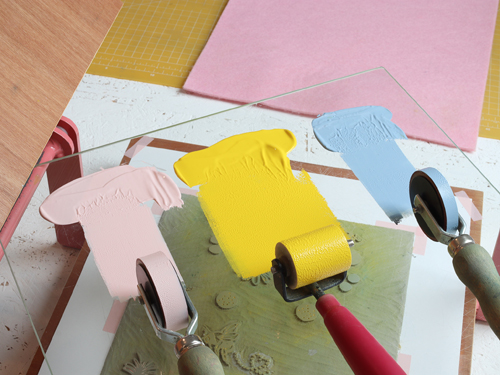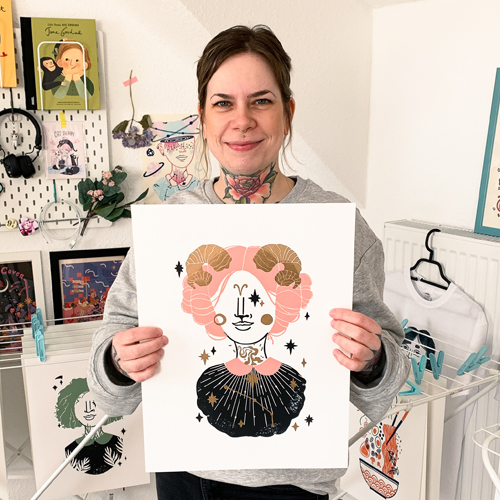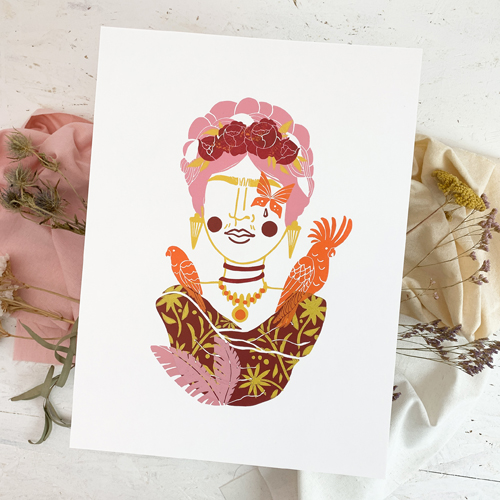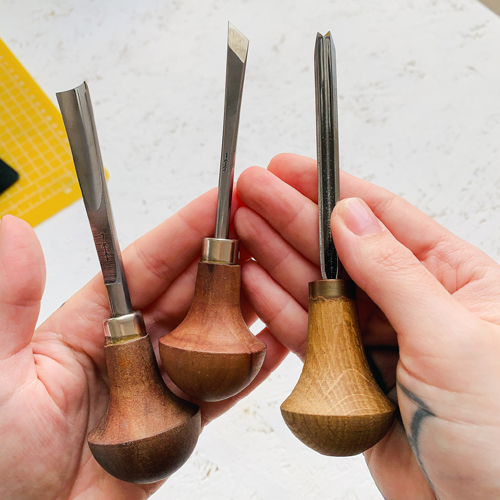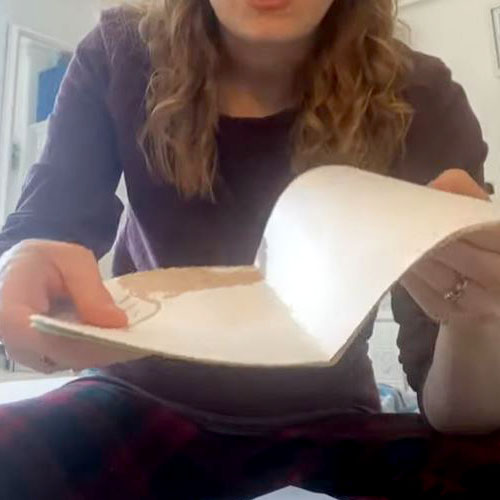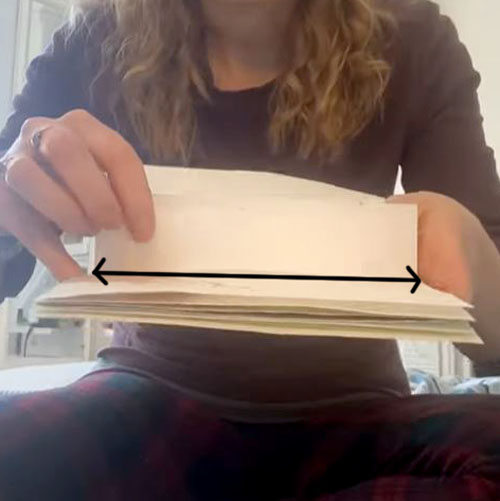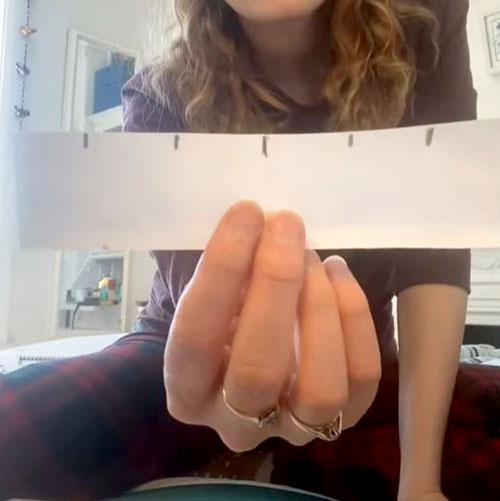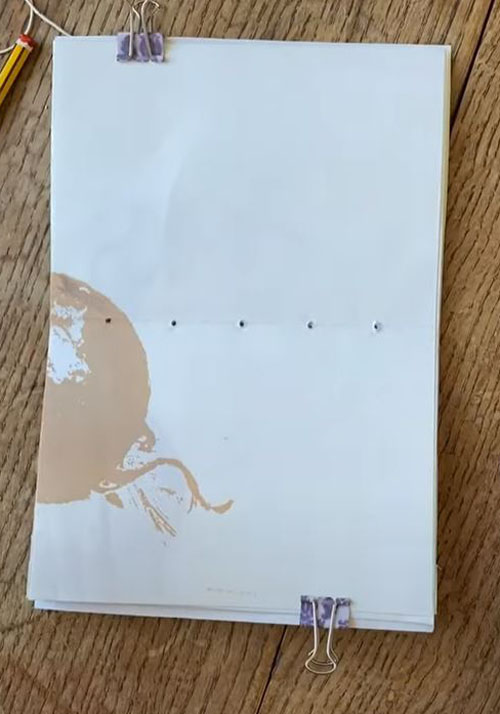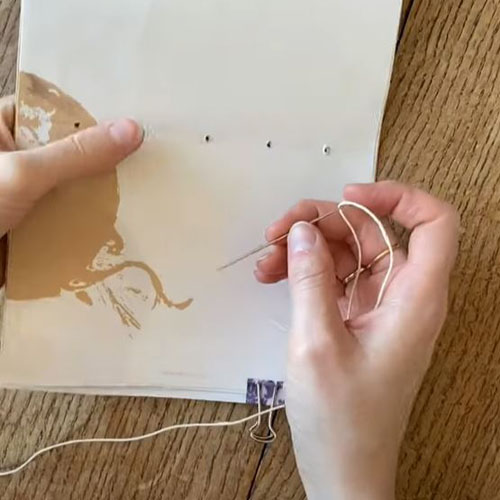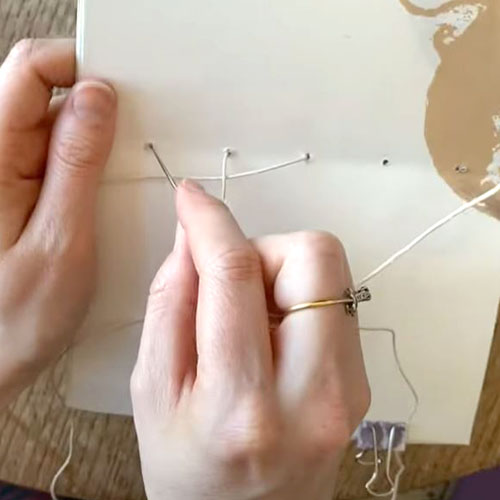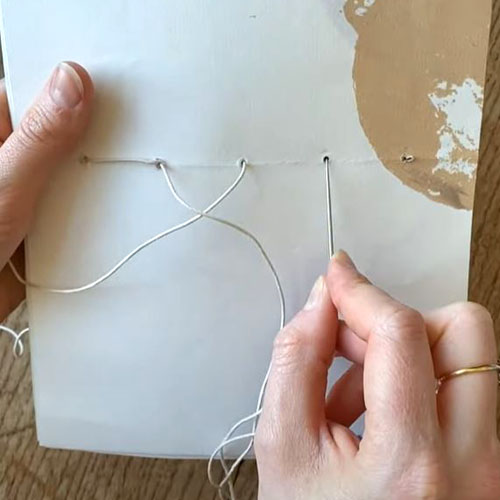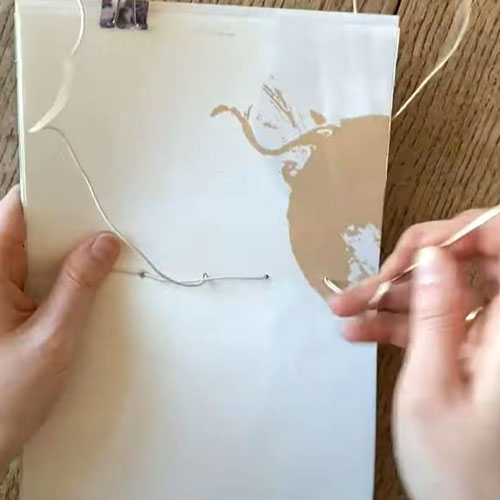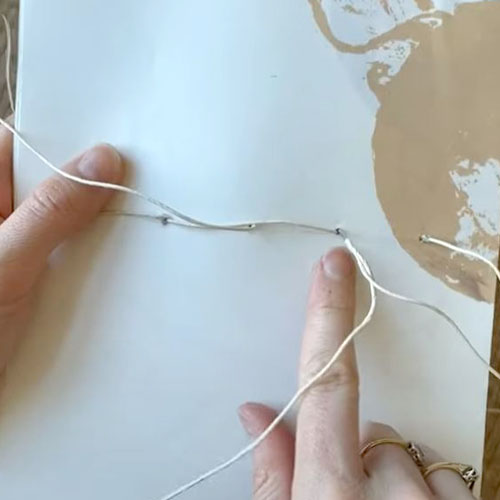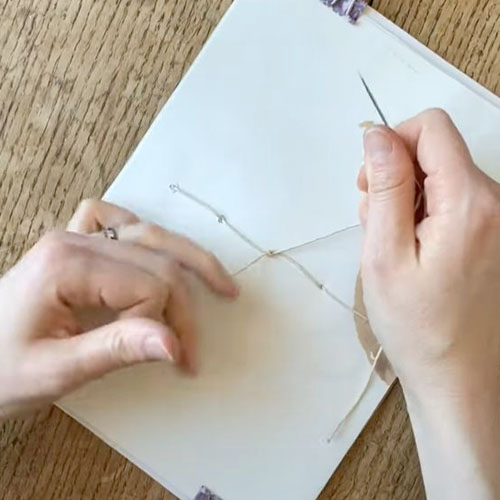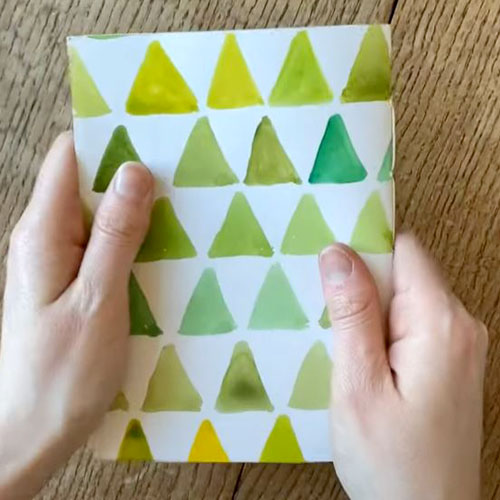Hey, my name is Anna, I am 34 years old and from Germany. I started linocut printing in 2018 but my first printing experience was during my product design studies at University. I love bold and colourful illustration styles, tattoos and graphic design.
Describe your printmaking process.
I usually start with a vision of a new design. I try to put this on paper, usually in tiny little sketches that don’t allow for much detail, but only the essentials. Once I’m satisfied with the sketch, I work it out digitally on the iPad. There I also plan the colours and layers. I print these layers mirror-inverted and transfer them separately to my linoleum blocks, which, printed on top of each other, form the whole design. I carve the first layer and print it. A few days later the process continues with the second layer and finally the third and last. Since I work with oil-based inks they take a few days, at best, to dry.
How and where did you learn to print?
I attended a lino printing class at uni in 2016, that’s where I learned some basics that gave me an idea of what I would need to get started on my own. But then I learned step by step while making. I watched others on Instagram and saw what materials they were using, read blogs and just got started. My best influence was the desire to create and find solutions to problems.
Why printmaking?
I love illustration but found it a shame that many works just languish digitally as a file. I also wanted to create a product with my own hands and control the entire process. Linoleum printing was therefore the best of both worlds for me.
Where do you work?
I work from home. I have my own creative space that is all about printing.
Describe a typical day in your studio.
The most typical day probably consists of checking orders, printing, filming and editing. I love the bright midday hours to capture my process on film. Instagram is also an integral part of my day, so I usually put my film footage into my Stories. Later, I sit at my PC and create either a Reel from it or edit a photo or two. I am a bit unorganized still and tend to work from day to day.
How long have you been printmaking?
In the summer of 2018, I made the first steps at home and in October I created the first of my typical “girl designs”. Discovering this design direction for myself was the best thing that could have happened. I prefer to work serially, that’s what I took from my design studies. The fact that I found my style so quickly was a stroke of luck for me, it set everything in motion. I’m sure everyone is different, but for me, a certain framework helps me to be creative. My framework is the recurring structure of my girls, their themes are new.
What inspires you?
Especially illustration. Whether digital, traditional or as a tattoo. Colour compositions can also be totally inspiring. Movies, books, games – generally everything that is visual. But I wouldn’t limit myself to that. Most of the time I don’t have to make an effort to find an idea, they always come to me.
What is your favourite printmaking product?
I think it’s the ink that I use. Mixing up the colours that I have planned digitally beforehand is a ton of fun. So my all-time favourite is the Caligo Safe Wash colours from Cranfield Colours. It was a game-changer for me to switch to (easily washable) oil-based inks and can only recommend it to everyone!
What have you made that you are most proud of?
If I leave out the jump into self-employment and I just focus on the prints, I would say the zodiac sign series. It was probably the most challenging because I had to actively do research, sometimes for a long time, to figure out the essence of a zodiac sign. My very favourite of those I created is Aquarius.
Where can we see your work? Where do you sell?
I sell my products on Etsy. Since I sell mainly abroad, this platform is still a great relief. On Instagram I am very active, there I show especially the creation process of my works!
What will we be seeing from you next?
I let my inspiration guide me very spontaneously, haha. But I’m trying to keep the number of new creations down a bit, on the one hand, to give more attention to the existing ones and on the other hand because I’m working on my own online course for lino printing beginners! There I will show the whole process structured and step by step. On Instagram, I already share many processes of my work but that of course is rather wild and spontaneous. My online course will be launching in the spring of 2022.
Do you have any advice for other printmakers and creatives?
Be sure to invest in good material if you are seriously interested. Nothing is more daunting (and dangerous) than having to work on old, hard linoleum plates with dull knives. You will lose motivation very quickly! Rather, acquire a few high-quality materials and expand your collection. I started with two cutting knives, unfortunately, chose the wrong sizes and had to reorder new ones directly. But of course, you learn the most from mistakes. Ask other artists what they recommend or use!
To see more from Anna follow her on Instagram and make sure to visit her Etsy shop and website. Feel free to join her waiting list so you don’t miss any information about her upcoming online course for linocut beginners.
